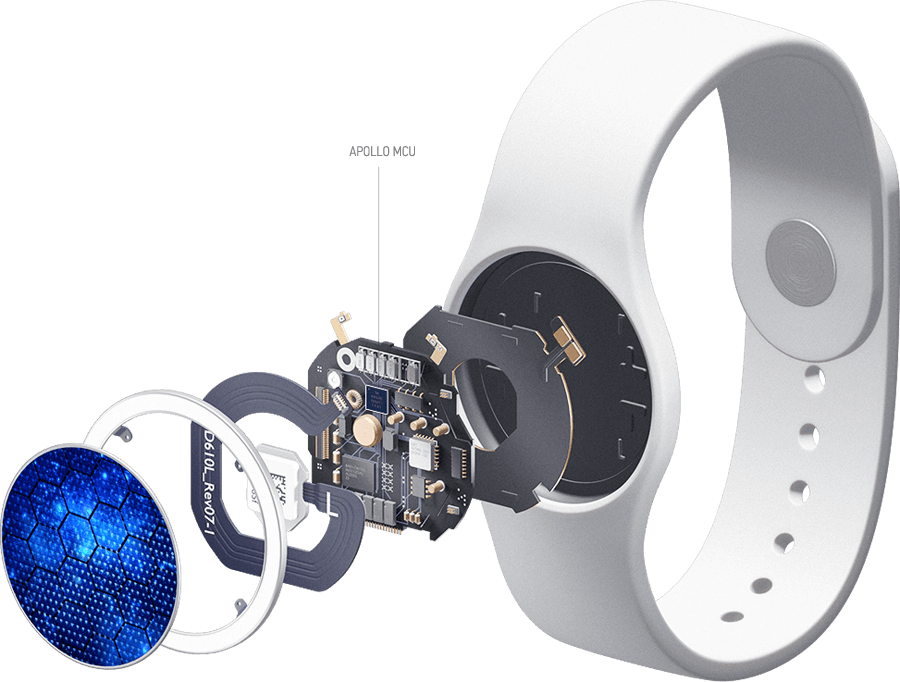
Within the climb to orbit, Just about every of your Saturn V's three levels burned for a little bit longer than envisioned. This still left the craft in an orbit about one kilometer greater than envisioned, anything well within tolerance. A melt away eleven seconds for a longer period than prepared meant that the CM entered the Earth's atmosphere a bit a lot quicker and at a shallower angle than prepared, but nonetheless in tolerance. This discrepancy took place not due to the effectiveness on the assistance method (which was exemplary), but because the melt away had been controlled from Earth. The CM's environmental control method stored the ship's cabin in suitable temperatures and pressures all over the mission, escalating by only 5.six °C (10 °File) through atmospheric entry.[58][fifty nine]
Usually-on Audio Always-on Audio Encounter really usually-on voice processing having an extremely-minimal energy analog microphone and optimized noise cancelling algorithms for apparent voice.
“Ambiq’s extremely-very low-power platform and remedies drive the semiconductor industry and the whole IoT ecosystem to rethink their design architecture and processes to tackle a similar energy usage restraints which have prevented AI from functioning on battery-powered endpoint devices. We’re thrilled to acknowledge Ambiq as being the ‘IoT Semiconductor Firm in the Year’ for 2023.”
[157] In a very 2010 job interview, Armstrong described that NASA constrained the very first moonwalk's time and distance simply because there was no empirical evidence of just how much cooling h2o the astronauts' PLSS backpacks would eat to handle their physique warmth technology even though engaged on the Moon.[162] Lunar ascent
This mission did in Oct of 1968 what Apollo 1 set out to do in February of 1967. It had been the flight that acquired Apollo back again on the right track, along with the acquainted, regular sequence of missions from this place on recollects This system’s achievements.
Apollo three would debut the Highly developed Block II CSM, the lunar mission-capable Model with the spacecraft designed to dock While using the Lunar Module and produce a tunnel through which astronauts could transfer among motor vehicles.
Ambiq® introduces the most recent addition for the Apollo4 SoC family, the fourth generation of Location-enabled SoCs. Crafted on the wealthy architecture, the Apollo4 Plus delivers enhanced graphics performance, superior security, and additional on-chip memory. Using a constructed-in graphics processing device (GPU) plus a significant accomplishing Screen driver, Apollo4 Plus permits designers of subsequent generation wearables and good devices to deliver far more gorgeous consumer interface (UI) results and Total user practical experience inside of a safer ecosystem to acquire their impressive solutions to another amount.
Clever houses is usually monitored and controlled by numerous devices and systems for instance voice-activated assistants, mobile apps, and sensible residence hubs. For instance, thermostats be managed remotely to regulate the temperature in the home, even though appliances like good fridges or washing machines is often instructed to operate at much more Electricity-efficient moments.
Nonetheless it wasn’t extended prior to this approach fell away from favour. With spacecraft 014, the spacecraft for Apollo 2, falling badly driving, a lot of started off questioning the value of flying a next Block I mission. There wasn’t an excessive amount the agency could learn from the Block I flight that it could then use into the Moon-certain Block II missions. Apart from, NASA experienced very long abandoned the exercise of duplicating missions; not considering that Gus Grissom followed in Al Shepard’s suborbital contrails in 1961 experienced NASA duplicated a mission.
The prestigious design and style gain Along with the Apollo4 Blue is a substantial milestone for Ambiq mainly because it resulted from a multi-party collaboration with EDBI®, Excelpoint®, iWOW®, and several authorities organizations.
Through the mission, the trigger was diagnosed because the rendezvous radar switch currently being in the incorrect situation, causing the pc to process facts from the two the rendezvous and landing radars simultaneously.[121][122] Program engineer Don Eyles concluded in a 2005 Advice and Management Conference paper that the trouble was due to a components design bug Beforehand witnessed in the course of screening of the primary uncrewed LM in Apollo five. Getting the rendezvous radar on (so it had been warmed up in the event of an unexpected emergency landing abort) ought to have been irrelevant to the pc, but an electrical phasing mismatch between two parts of the rendezvous radar program could trigger the stationary antenna to appear to the computer as dithering backwards and forwards amongst two positions, dependent upon how the hardware randomly run up.
Ambiq's mission would be to build the lowest-electricity semiconductor methods to help clever devices all over the place by building the lowest-energy semiconductor options to generate a more energy-efficient, sustainable, and data-pushed earth. Ambiq has aided foremost makers around the globe acquire items that previous weeks on a single demand (rather then times), although delivering a maximum aspect established in compact industrial types.
Armstrong then jumped onto the ladder's third rung, and climbed in the LM. Soon after transferring to LM lifetime support, the explorers lightened the ascent phase to ultra low power soc the return to lunar orbit by tossing out their PLSS backpacks, lunar overshoes, an empty Hasselblad digital camera, together with other tools. The hatch was shut once more at 05:11:thirteen. They then pressurized the LM and settled all the way down to slumber.[163]
Armstrong found a transparent patch of floor and maneuvered the spacecraft toward it. As he obtained ultra low power mcu nearer, now 250 feet (76 m) above the area, he found out his new landing web-site experienced a crater in it. He cleared the crater and found An additional patch of amount floor.

Get Smart. Use Less Energy.
Ultra-low power SoCs for IoT endpoint devices
that demand complex operations
and longer battery life.
✍ Ambiq® is committed to further improve the quality of life by enabling the intelligence of endpoints while further reducing carbon footprints. Ambiq – your partner in endpoint intelligence.
✯✯✯Based in Austin, San Jose, Hsinchu, Shenzhen, and Shanghai, our leadership and management teams consist of advocates, builders, enthusiasts, entrepreneurs, explorers, incubators, inventors, pioneers, protectors, thinkers, and visionaries. With a diverse spectrum of experiences and skillset, we came together and united with one goal to enable the true Internet of Things where the battery-powered endpoint devices can truly be connected intuitively and intelligently 24/7.
Ambiq Wins the Demo of the Year Award at 2023 TSMC Technology Symposium
September 7, 2023, Austin, TX – Ambiq®, a leading developer of ultra-low-power semiconductor solutions that deliver a multifold increase in energy efficiency, was awarded the Demo of the Year Award by TSMC as a participant of the Innovation Zone at the 2023 TSMC North America Technology Symposium.
Ambiq Wins the Demo of the Year Award at 2023 TSMC Technology Symposium
During the April event, Ambiq showcased various product design wins using TSMC’s 22nm technology in wearables, digital health, smart home, Industrial IoT, pet trackers, and retail segments, with industry-leading energy efficiency. Ambiq also featured two live demos emphasizing its leadership in enabling endpoint AI with its HeartKit™ for remote patient monitoring and its graphics display capabilities for a vivid user interface.

TSMC pioneered the pure-play semiconductor foundry business model when it was founded in 1987, helping startup companies accelerate their innovations by providing access to the industry’s leading process technologies and manufacturing capacity. Since 2021, TSMC has expanded that mission with an Innovation Zone at its worldwide Technology Symposiums, highlighting how TSMC partners with startup companies to enable cutting-edge products from various applications, including high-performance computing, communication, automotive, IoT, and consumer segments.
“We’re grateful to TSMC and our booth visitors for allowing us to share our energy-efficient technology and processor solutions with them,” said Ambiq’s CEO, Fumihide Esaka. “We’re moving towards an exciting frontier of AI becoming more engrained with our daily lives. With that vision on the horizon, we will continue to develop innovative and first-of-its-kind ultra-low-powered solutions that keep innovation and sustainability in mind.

Ambiq’s mission is to develop the lowest-power semiconductor solutions to enable intelligent devices everywhere by developing the lowest-power semiconductor solutions to drive a more energy-efficient, sustainable, and data-driven world. Ambiq has helped leading manufacturers worldwide develop products that last weeks on a single charge (rather than days), while delivering a maximum feature set in compact industrial designs. Ambiq’s goal is to take Artificial Intelligence (AI) where it has never gone before in mobile and portable devices, using Ambiq’s advanced ultra-low power system on chip (SoC) solutions. Ambiq has shipped more than 200 million units as of March 2023.
Ambiq Designs Low-Power for Next Gen Endpoint Devices
Ambiq’s VP of Architecture and Product Planning, Dan Cermak, joins the ipXchange team at CES to discuss how manufacturers can improve their products with ultra-low power. As technology becomes more sophisticated, energy consumption continues to grow. Here Dan outlines how Ambiq stays ahead of the curve by planning for energy requirements 5 years in advance.
Ambiq Highlights From Embedded World 2024
Facebook | Linkedin | Twitter | YouTube